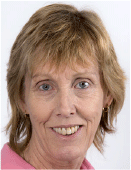Assessing the impacts of scale residues from offshore oil and gas decommissioning on marine organisms
Tom Cresswell A C , Sue Brown A , Henri Wong A and Simon Apte BA ANSTO, Locked Bag 2001, Kirrawee DC, NSW 2232, Australia.
B CSIRO Land and Water, New Illawarra Road, Lucas Heights, NSW 2234, Australia.
C Corresponding author. Email: Tom.Cresswell@ansto.gov.au
The APPEA Journal 61(2) 379-383 https://doi.org/10.1071/AJ20024
Accepted: 22 February 2021 Published: 2 July 2021
Abstract
Successful decommissioning of offshore oil and gas infrastructure requires an effective and safe approach to assessing and managing chemical and radiological residues. Scale frequently accumulates on the interior surfaces of pipes and other structures and may persist long after extraction operations have ceased. Scale materials can contain a range of metal contaminants (including mercury), as well as naturally occurring radioactive materials. In newer or more accessible infrastructure, the scale is routinely removed, and becomes a waste product. The persistent nature of scale contaminants can result in a radiological dose to the organisms living on, or near an intact pipeline. Eventually, infrastructure corrosion following in situ decommissioning (abandonment) could lead to metal and radionuclide contaminants being accessible to the surrounding seafloor environment, where bioaccumulation and subsequent ecotoxicological effects from the chemical and radiological properties of the scale could occur. The paper describes a tiered approach to assess the ecological impacts of pipeline scale in order to assist operators with their plans for decommissioning offshore infrastructure, especially when considering ‘leave in place’ options.
Keywords: decommissioning, closure, retirement, offshore infrastructure, pipelines, scale, metals, mercury, naturally occurring radioactive materials, NORM, risk assessment, in situ, ecotoxicology, ecology, marine.

Dr Tom Cresswell holds a BSc (Hons) in Ocean Science (2003) and an MSc in Applied Marine Science (2005), both from the University of Plymouth, UK. Tom was awarded his PhD in Applied Sciences (Environmental Toxicology and Chemistry) from RMIT University in 2013. Tom is currently a senior research scientist in the Environment Research Theme at Australian Nuclear Science and Technology Organisation (ANSTO), where he has worked since 2012 on the development and use of nuclear techniques in ecotoxicology. He currently serves on the Board of Science and Technology Australia (STA) as the Chemical Sciences Cluster Representative (2.5 years) and on the Board of the Society of Environmental Toxicology and Chemistry (SETAC) Australasia as the Vice President (5 years). Tom was previously the Secretary of the South Pacific Environmental Radioactivity Association (SPERA), which he held for 4 years until October 2020. |

Dr Sue Brown graduated from the University of Technology, Sydney with a Bachelor of Applied Science (Applied Chemistry), Honours and then completed a PhD at the University of Western Sydney (2001). Sue is a senior radiochemist at the Australian Nuclear Science and Technology Organisation (ANSTO) in the Minerals business unit, where she has worked for 36 years. Sue is the leader of the Radiochemistry Group that provides radioanalytical expertise and support to projects that will increase the competitiveness and environmental sustainability of operations in the uranium mining sector and mineral processing industries affected by naturally occurring radioactivity (NORM). Sue has extensive knowledge and understanding of radioactivity and the radioanalytical techniques used for the measurement of NORM, particularly in the deportment of radioactivity in a wide range of mineral processing circuits. Sue is a member of the Royal Australian Chemical Institute. |

Henri Wong holds a BSc in Chemistry (1989) from University of Wollongong. Henri is currently the elemental facility manager in the Isotope Tracing and Natural System platform at Australian Nuclear Science and Technology Organisation (ANSTO). He started working at ANSTO in 1989, commencing in the low level radiochemistry laboratory measuring environmental radionuclides before moving into the trace elemental analysis laboratory using inductively coupled plasma - atomic emission spectroscopy (ICP-AES) and ICP-MS. |

Dr Simon Apte holds a BSc (Hons) in Environmental Science (1980) and a PhD in Environmental Analytical Chemistry (1985) from the University of Southampton, UK. He is a senior principal research scientist at the Centre for Environmental Contaminants Research, CSIRO Land and Water, Lucas Heights, Australia. He is a fellow of the Royal Australian Chemical Institute (RACI). Simon was awarded the RACI’s Environment Medal in 2010. His research team specialises in the determination of trace elements in aquatic systems and understanding the links between their chemical forms and their potential impacts on aquatic ecosystems. |
References
AIMS (2018). ‘The Aims Index of Marine Industry’. (Australian Institute of Marine Science, Canberra, Australia.)ANZG (2018). ‘Australian and New Zealand Guidelines for Fresh and Marine Water Quality’. (Australian and New Zealand Governments and Australian State and Territory Governments, Canberra, Australia.)
ARPANSA (2015). ‘Radiation Protection of the Environment. Guide G-1’. (Australian Radiation Protection and Nuclear Safety Agency.)
ASTM (2010). ‘ASTM Standard E1688-10. Standard Guide for Determination of the Bioaccumulation of Sediment-Associated Contaminants by Benthic Invertebrates’. (West Conshohocken, PA, 2003.)
Bull, A. S., and Love, M. S. (2019). Worldwide oil and gas platform decommissioning: a review of practices and reefing options. Ocean & Coastal Management 168, 274–306.
| Worldwide oil and gas platform decommissioning: a review of practices and reefing options.Crossref | GoogleScholarGoogle Scholar |
Fam, M. L., Konovessis, D., Ong, L. S., and Tan, H. K. (2018). A review of offshore decommissioning regulations in five countries – strengths and weaknesses. Ocean Engineering 160, 244–263.
| A review of offshore decommissioning regulations in five countries – strengths and weaknesses.Crossref | GoogleScholarGoogle Scholar |
Fowler, A. M., Jørgensen, A.-M., Svendsen, J. C., Macreadie, P. I., Jones, D. O. B., Boon, A. R., Booth, D. J., Brabant, R., Callahan, E., Claisse, J. T., Dahlgren, T. G., Degraer, S., Dokken, Q. R., Gill, A. B., Johns, D. G., Leewis, R. J., Lindeboom, H. J., Linden, O., May, R., Murk, A. J., Ottersen, G., Schroeder, D. M., Shastri, S. M., Teilmann, J., Todd, V., Van Hoey, G., Vanaverbeke, J., and Coolen, J. W. P. (2018). Environmental benefits of leaving offshore infrastructure in the ocean. Frontiers in Ecology and the Environment 16, 571–578.
| Environmental benefits of leaving offshore infrastructure in the ocean.Crossref | GoogleScholarGoogle Scholar |
McKay, S., Higgins, S. A., and Baker, P. (2020). NORM inventory forecast for australian offshore oil and gas decommissioned assets and radioactive waste disposal pathways. The APPEA Journal 60, 19–33.
| NORM inventory forecast for australian offshore oil and gas decommissioned assets and radioactive waste disposal pathways.Crossref | GoogleScholarGoogle Scholar |
Sommer, B., Fowler, A. M., Macreadie, P. I., Palandro, D. A., Aziz, A. C., and Booth, D. J. (2019). Decommissioning of offshore oil and gas structures – environmental opportunities and challenges. Science of The Total Environment 658, 973–981.
| Decommissioning of offshore oil and gas structures – environmental opportunities and challenges.Crossref | GoogleScholarGoogle Scholar |
Wood Mackenzie (2020). Australia Oil & Gas Industry Outlook Report. Available at: https://appea.com.au/wp-content/uploads/2020/06/Australia-Oil-and-Gas-Industry-Outlook-Report.pdf, Accessed 8 January 2021.


